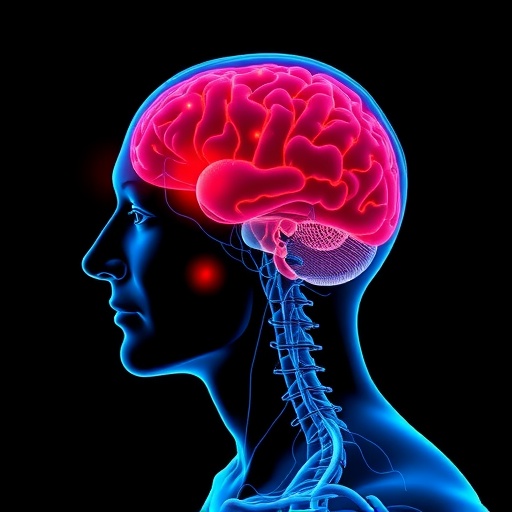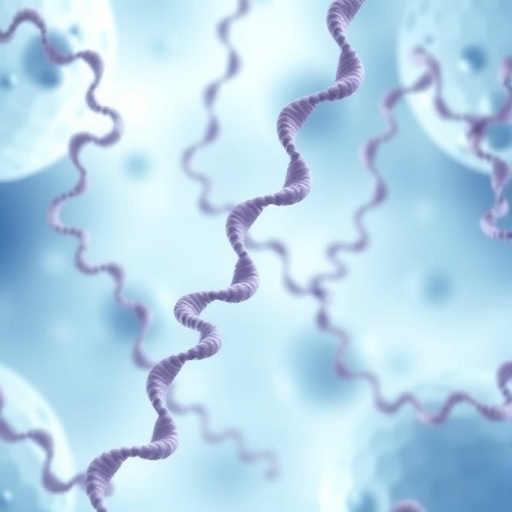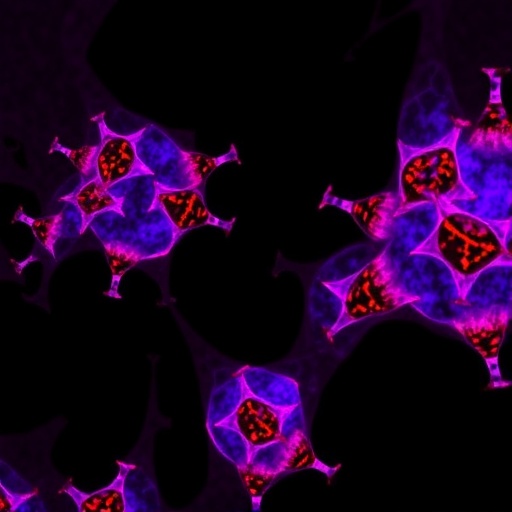In a groundbreaking study published in npj Parkinson’s Disease, researchers have illuminated the profound impact of subthalamic nucleus stimulation on brain network dynamics in patients suffering from Parkinson’s disease. This highly intricate research reveals that deep brain stimulation (DBS), a widely used therapeutic intervention for motor symptoms, induces a remarkable shift in the functional architecture of brain networks—from extensive functional support mechanisms toward a dominance of motor-related activity. Such findings not only deepen our understanding of Parkinson’s pathophysiology but also pave the way for advancing therapeutic approaches that are more precise and effective.
Parkinson’s disease is primarily characterized by motor dysfunction, including tremor, rigidity, and bradykinesia, but it also encompasses a broader spectrum of cognitive and neuropsychiatric symptoms linked to widespread dysregulation within the brain’s complex neural networks. Traditional views have held that subthalamic nucleus stimulation selectively modulates motor circuits, yet this study compellingly demonstrates that the intervention prompts a dynamic reconfiguration of the brain’s global network states. Specifically, the transition from a state of extensive and distributed functional support—comprising networks that maintain cognitive and sensorimotor functions—toward a motor-dominant network reflects a fundamental neurophysiological reorganization that correlates with symptomatic improvement.
The research team employed advanced neuroimaging techniques alongside sophisticated network analysis tools to map alterations in brain functional connectivity before and after therapeutic stimulation. Through resting-state functional magnetic resonance imaging (fMRI) and graph theoretical approaches, the investigators could delineate network topology changes, especially focusing on shifts in the balance between integration and segregation of brain regions. These analyses unveiled that subthalamic stimulation significantly reduces global connectivity patterns that support higher-order cognitive processes, while simultaneously fostering enhanced connectivity within motor circuits, providing compelling evidence for a targeted network modulation mechanism underlying clinical efficacy.
One of the study’s most startling revelations is the demonstration of a dynamic and reversible phenomenon. When stimulation is activated, the brain exhibits a marked bias toward motor network dominance, but upon cessation, the functional support networks gradually regain prominence. This plasticity indicates that DBS exerts its only partially understood therapeutic actions not through permanent changes but via persistent modulation of network dynamics. Therefore, the findings emphasize the necessity to consider DBS as a dynamic neuromodulatory intervention shaping brain-wide communication patterns in real-time.
Beyond just identifying network alterations, the researchers ventured into exploring how these shifts relate to clinical motor symptoms. The heightened motor network dominance achieved through DBS correlated strongly with significant reductions in motor disability assessed using standard clinical scales. This correlation suggests that optimal therapeutic effects depend upon guiding the brain’s network state toward configurations that prioritize motor control pathways—a critical insight that could inform personalized DBS programming to maximize patient outcomes while minimizing side effects.
The implications of such network-specific modulation extend to a broader neuroscientific context, offering vital clues about how distributed brain systems recalibrate in response to targeted interventions. Understanding that Parkinson’s disease involves not merely localized deficits but widespread network destabilization pushes the field toward adopting more holistic models of neurological disorders. Consequently, this research underscores the importance of systemic network diagnostics and treatments, coupled with the potential for designing future interventions that balance motor improvements with preservation of cognitive functions.
Another captivating facet of the study involves elucidating the underlying mechanisms through which subthalamic nucleus stimulation achieves these network effects. The researchers postulate that DBS may exert its influence by modulating inhibitory and excitatory signaling within cortico-basal ganglia-thalamic loops, resulting in altered oscillatory patterns and enhanced synchronization in motor areas. These oscillatory dynamics are fundamental to motor control, and their modulation by DBS could explain both the immediate symptomatic relief and the longer-term plastic changes observed within the network.
The methodological rigor of this research deserves special mention, as the team utilized a large cohort of Parkinson’s patients undergoing clinically indicated DBS treatment. Repeated neuroimaging sessions under various stimulation conditions provided high-quality longitudinal data, enabling precise tracking of network dynamics over time. Furthermore, sophisticated computational models allowed for the disentangling of complex interactions within and between networks, defining novel biomarkers that can predict therapeutic responses. These advances set a new standard for translational neuromodulation research.
Importantly, this research also challenges previous assumptions that DBS’s effects were confined to the targeted neural substrate alone. Instead, by expanding the viewpoint to whole-brain network dynamics, the study reveals how local stimulation results in cascading global effects that reshape functional connectivity patterns across multiple cortical and subcortical regions. Such insight invites revisiting existing paradigms of DBS mechanisms and encourages the exploration of diverse stimulation targets and stimulation parameters to optimize therapeutic landscapes.
Moreover, the findings establish a framework for future investigations focused on non-motor manifestations of Parkinson’s disease. Since the relatively reduced connectivity of functional support networks relates to cognitive functions, understanding how DBS influences these networks over time could illuminate strategies to mitigate cognitive decline or mood disturbances commonly seen in Parkinson’s patients. Consequently, staggered or adaptive stimulation protocols may be designed to balance the benefits in motor control with preservation or enhancement of cognitive processing capabilities.
The paradigm shift presented by this work urges clinicians and neuroscientists alike to integrate network-level perspectives in both research and clinical practice. For the patient, this may translate into DBS programming that specifically targets desired network reconfigurations, potentially monitored through biomarkers derived from functional neuroimaging data or electrophysiological recordings. From a scientific standpoint, unraveling the fine-tuned balance between distributed network support and localized motor dominance represents a cutting-edge frontier in understanding brain dynamics and therapeutic brain stimulation.
Intriguingly, this investigation also raises important questions regarding the long-term effects of sustained network rebalancing. The brain’s remarkable capacity for neuroplastic change implies that chronic DBS could induce enduring alterations that extend beyond transient modulation of network states. Understanding these adaptive processes could inform both the timing and duration of stimulation sessions and foster the development of new devices capable of dynamic, closed-loop modulation based on ongoing brain activity monitoring.
The potential applications arising from these insights are vast. Apart from refining DBS therapy for Parkinson’s disease, similar principles might be applied to other neuropsychiatric and neurological disorders characterized by aberrant network dynamics, such as epilepsy, depression, or obsessive-compulsive disorder. By tailoring stimulation parameters to steer brain networks toward healthier configurations, neuromodulation techniques could become more precise, effective, and personalized, revolutionizing the therapeutic landscape.
Finally, this study’s multidisciplinary approach—combining clinical neurology, neuroimaging, computational neuroscience, and systems biology—highlights the power of integrative research in addressing complex brain disorders. As technologies for brain monitoring and modulation evolve, future work inspired by these findings will undoubtedly propel the scientific community towards more profound and actionable understanding of brain network dynamics and their manipulation for therapeutic gain.
As the understanding of Parkinson’s disease expands beyond symptomatic description to mechanistic insights at the network level, this pathbreaking research on subthalamic stimulation shines a beacon of hope for patients and clinicians. Igniting a new era where brain network orchestration becomes the focal point of therapy, it calls upon the scientific community to explore, innovate, and refine neuromodulatory interventions that harness the brain’s own dynamic potential, promising improved quality of life and functional restoration.
Subject of Research: Brain network dynamics and modulation through subthalamic nucleus stimulation in Parkinson’s disease.
Article Title: Subthalamic stimulation shifts brain network dynamics from extensive functional support to motor dominance in Parkinson’s disease.
Article References:
Chu, C., Zhang, Z., Wang, J. et al. Subthalamic stimulation shifts brain network dynamics from extensive functional support to motor dominance in Parkinson’s disease. npj Parkinsons Dis. 11, 340 (2025). https://doi.org/10.1038/s41531-025-01184-9
Image Credits: AI Generated
DOI: https://doi.org/10.1038/s41531-025-01184-9
Tags: brain network dynamics in Parkinson’scognitive symptoms in Parkinson’sDeep Brain Stimulation for Parkinson’sfunctional architecture of brain networksmotor control improvement in Parkinson’smotor dysfunction and brain networksneuroimaging techniques in neuroscienceneurophysiological reorganization in brainParkinson’s pathophysiology insightsParkinson’s disease treatment advancementssubthalamic nucleus stimulationtherapeutic approaches for Parkinson’s





